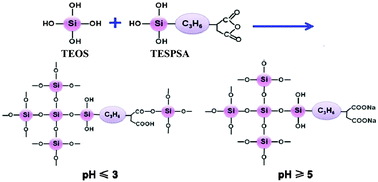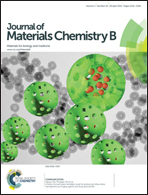The design and synthesis of a soluble composite silica xerogel and the short-time release of proteins
Abstract
Conventional silica xerogels prepared through sol–gel processing are regarded as suitable materials for the long-term release of proteins due to the mild processing conditions. However, they fall short of short-time release of these large molecules because of their small pore size and a slow dissolution rate. With the goal of achieving controlled release of large molecules (such as proteins) in a very short time (several days), herein we focus on the co-hydrolysis and co-condensation of different precursors to synthesize composite xerogels (co-xerogels) with adjustable degradation rates. Tetraethoxysilane and 3-(triethoxysilyl) propylsuccinic anhydride were employed to prepare the co-xerogels. Succinic anhydride was chosen due to its potential to crosslink with Si–OH and to integrate into the silica network under acidic conditions. Using the trypsin inhibitor (TI) as a model drug to characterize the release properties of co-xerogels, we obtained tailored release behavior of TI (2–7 days). It is demonstrated that the co-hydrolysis and co-condensation of different precursors is an easy technique that further expands the applicability of sol–gel materials as excellent carriers for the controlled release of a variety of drugs.

- This article is part of the themed collection: 2015 Journal of Materials Chemistry B Hot Papers

 Please wait while we load your content...
Please wait while we load your content...